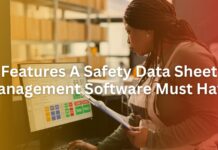Organizing events, whether they’re small gatherings or large conferences, involves meticulous planning and execution. Event management software has become a crucial tool for streamlining this process, offering features that simplify tasks like registration, ticketing, communication, and more. In this comprehensive guide, we’ll walk you through the steps of effectively utilizing event management software to host successful events.
Event management software refers to digital tools designed to assist event planners in organizing and managing various aspects of events. From handling registrations to promoting events and analyzing performance, these platforms offer a comprehensive solution for event planning needs.
Choosing the Right Event Management Software
Selecting the appropriate event management software is crucial to ensure a seamless planning process. Click here for event management software and consider various factors such as your budget, event size, desired features, user interface, customer support, and scalability to make an informed decision.
Setting Up Your Event Management Software
Once you’ve chosen a software platform, the next step is to set it up. Most event management software solutions offer straightforward installation processes, usually involving creating an account, customizing settings, and integrating necessary third-party tools.
Understanding Key Features
It typically includes a range of features to assist with different aspects of event planning and execution. Key features may include registration management, ticketing, email marketing, reporting and analytics, attendee management, and more.
Creating and Managing Events
To create and manage events using event management software, follow these steps:
Step 1: Define Event Details
Start by defining the basic details of your event, including the date, time, location, and description.
Step 2: Set Up Registration Forms
Create customizable registration forms to collect attendee information and preferences.
Step 3: Configure Ticketing Options
Set up ticketing options, including pricing, ticket types, and discounts.
Step 4: Design Event Pages
Customize event pages with branding elements, images, and relevant information.
Step 5: Promote Your Event
Utilize built-in marketing tools to promote your event through email campaigns, social media, and other channels.
Step 6: Manage Registrations
Track and manage attendee registrations, including sending confirmations and handling inquiries.
Step 7: Monitor Event Performance
Use reporting and analytics tools to track registrations, ticket sales, attendee engagement, and other metrics.
Integrations with Other Tools
Many event management software platforms offer integrations with other tools and services, such as CRM systems, email marketing platforms, payment gateways, and more. These integrations enhance the functionality of the software and streamline workflows.
Streamlining Communication and Collaboration
Event management software often includes built-in communication tools like email automation, SMS notifications, and messaging platforms to facilitate communication between organizers, attendees, and vendors. Collaboration features allow team members to work together efficiently.
Customizing Your Event Pages
Personalizing event pages with your branding elements, logos, colors, and images helps create a cohesive and professional look that reflects your brand identity. Most event management software platforms offer customization options to tailor event pages to your preferences.
Managing Attendees and Registrations
Efficiently managing attendee lists, RSVPs, and inquiries is crucial for ensuring a seamless event experience. Event management software simplifies this process by providing tools for tracking registrations, sending reminders, and managing attendee data securely.
Promoting Your Events
In addition to traditional marketing methods, event management software enables you to promote your events through various channels, including social media, email campaigns, and online advertising. Leveraging these promotional tools helps reach a wider audience and drive attendance.
Monitoring and Analyzing Event Performance
After hosting an event, it’s essential to analyze its performance to identify areas for improvement and measure success. Event management software provides reporting and analytics tools that track key metrics such as attendance rates, ticket sales, revenue, and attendee feedback.
Handling Payments and Finances
Event management software often includes features for handling payments and finances, such as accepting online payments, issuing refunds, managing budgets, and generating financial reports. These tools streamline the financial aspects of event planning and help maintain financial transparency.
Ensuring Security and Data Privacy
As events involve handling sensitive attendee information, security and data privacy are paramount. Event management software should comply with relevant regulations such as GDPR and PCI DSS and employ robust security measures to protect attendee data from unauthorized access and breaches.
Troubleshooting Common Issues
Despite its benefits, event management software may encounter occasional issues or challenges. Common issues include technical glitches, payment processing errors, and attendee inquiries. Most software providers offer FAQs, tutorials, and customer support to assist users in troubleshooting problems effectively.
Conclusion
Event management software has revolutionized the way events are planned, executed, and analyzed. By leveraging its features and functionalities, event planners can streamline processes, enhance attendee experiences, and achieve their event goals more efficiently. Whether you’re organizing a small gathering or a large-scale conference, investing in the right event management software can make all the difference in the success of your events.















